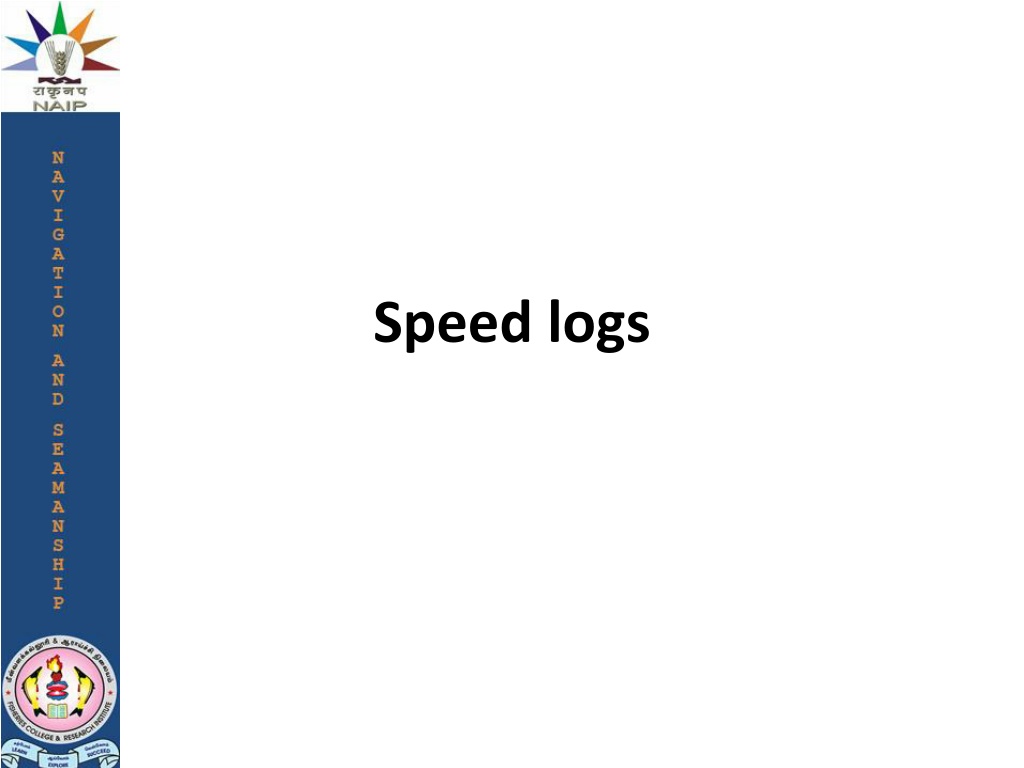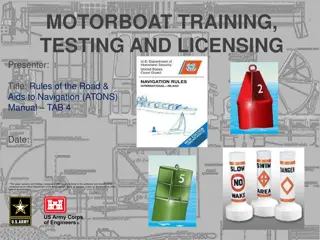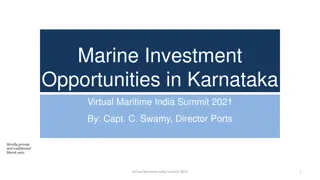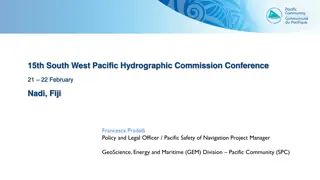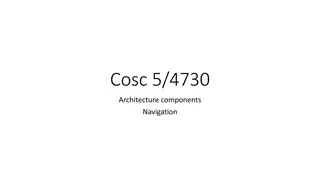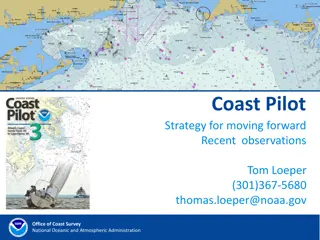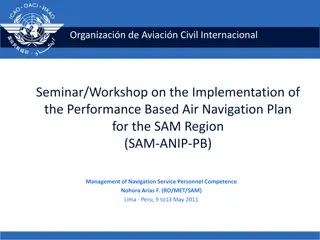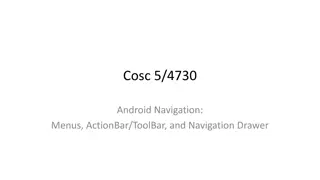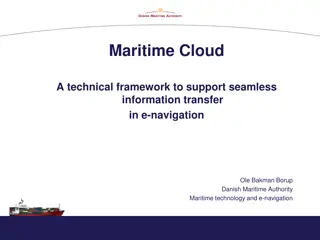Understanding Speed Logs and Their Evolution in Maritime Navigation
Speed logs play a crucial role in measuring a vessel's speed and distance traveled through water. The evolution from primitive chip logs to modern RPM counters has significantly improved accuracy and efficiency in maritime navigation. Learn about the history, types, and working principles of speed logs in this informative guide.
Download Presentation

Please find below an Image/Link to download the presentation.
The content on the website is provided AS IS for your information and personal use only. It may not be sold, licensed, or shared on other websites without obtaining consent from the author. Download presentation by click this link. If you encounter any issues during the download, it is possible that the publisher has removed the file from their server.
E N D
Presentation Transcript
Introduction The speed log is a device used to measure the speed of a moving vessel. Unit used for expressing the speed of a vessel is knots (Nautical miles/hour).Logs are used on vessels to record the speed and also the number of nautical miles the vessel has travelled through the water in a given time. Speed log are generally classified in to two types i) Conventional logs ii) Modern logs
Chip log or Ship log The chip log or ship log - a crude speedometer invented in 16thcentury to determine a vessels speed. It was considered important first navigational tool for dead reckoning. Before the chip log was invented, a ship s speed was measured by dropping a small wooden piece in water just ahead of the ship s forward. The time taken by the ship to move away from the wooden piece was then noted with the help of sandglass and on that basis an approximate speed was calculated. This log was known as Dutchman's Log.
The ship log was made with a quadrant (quarter circle) shaped wooden board attached to a log line. Log line was knotted at regular intervals and attached to the board with a bridle of three lines connected to the holes made at uniform spacing on the board
the lower side of the board was made of lead or piece of lead at the centre of the circular side. The log line was wound on a free turning reel. The log chip was thrown overboard where it floated vertically due to its ballasting. A considerable length of log line was let out to get the log chip into undisturbed water astern, where its resistance to forward motion keeps it essentially stationary in water (the wooded plank stay at the same place in water). As the ship moved forward, the line was pulled off the reel.
This was usually a 30 second timer and gave far more accurate results. Markings were made on the log line which represented the distance travelled by the ship. A sand glass was also used to measure the time taken by the ship to move away from the chip log. According to the length of the log line released over the stern and the markings on the line, the speed of the ship was calculated. The name of the unit knot, for nautical mile per hour, was derived from this method of measurement.
RPM Counters The engine revolution counters provide a convenient means of determining speed and distance. They automatically count the revolutions of the propellers, and show the total count continuously on their dials. By means of a master counter, average revolutions made by the propellers can be obtained.
The Piometer Log or Pressure Log or Pilot Tube The piometer log is similar to that of a pilot tube of an aircraft. A long tube called Rodmeter, is the main part of this log that protrudes from the hull of the ship. Rodmeter has two faces, one facing the direction of the sea water flow and the other is perpendicular to the flow. The face of the opening in the direction of sea water flow measures the dynamic seawater pressure where as the perpendicular face measures the static seawater pressure. A difference of both these pressures is used to measure the ship s speed.
Principle Two tubes with same diameter are immersed in to the water below the vessel hull. The first one is closed to one end and opens at the other, is immersed in water with opening facing down. In this tube, static pressure develops, which is proportional to the depth of the orifice or opening below the water. Another tube is similar to the first one, but with an orifice opening sideways facing to the direction of ship s forward movement. It is also immersed to the same depth and in this tubes both static and dynamic pressures are developed during vessel s motion.
Components of Pilot log 1. Two openings outside the hull of the ship, static tube that provides static pressure and impact or Pilot tube that measures dynamic pressure or the water flow of pressure (Rodmeter) 2. Controller unit (pressure differentiator) 3. Speed and distance transmitter 4. Speed and distance recorder
Operations Pilot tube faces forward so that when the vessel moves forward, the water causes a pressure at the tube this dynamic pressure is proportional to the speed at which the vessel moves. The pressure differentiator measures the differential pressure.
Impeller logs An impeller or small propeller that projects outside the vessel s hull below the bottom of the boat. The movement of the vessel s hull through the water causes the impeller to rotate. The rotation of impeller produces the electric impulse that is proportional to the counts or revolutions of impeller and the is translated into distance and speed. The problem with this log is that the projection below the boat is liable to be damaged by fishing gear and debris floating in water. The Impeller Log is fitted in small sized vessels including fishing vessels. A typical impeller log contains the following components, 1. The log tube sensor assembly 2. The amplifier 3. Speed indicator and distance counter
Induction log or Electromagnetic speed log or Em log The electromagnetic speed log also called as induction log or EM log measures the electromagnetic induction generated in sea water by its movement relative to magnetic field by the electrodes fitted in the hull of a vessel. The sea water acts as the conductor and generates an emf.. Electromagnetic Speed Log is highly accurate in indication of speed though the water even at low speeds.
Principle The flow of a conducting seawater past a sensor causes electromagnetic induction in the sensor which can be measured and which is proportional to the speed of the flow of the water. A typical EM log consists the following parts 1. Master Indicator 2. Preamplifier 3. Sensor
Operation EM log consists of two electrodes placed beneath the hull. Magnetic field is electromagnet. In the electromagnetic log, the potential difference generated in water by its movement relative to the magnetic filed is sensed by the electrodes. The current induced in these electrodes by the water flowing past is a function of speed. The measurement of speed of a ships by this log has been found to be accurately economic and simple. produced by an
Advantages of EM Log i) The sensor device doesn t project beyond the bottom of the ship. ii) EM log operates with greater accuracy and can measure smaller ship speeds. iii) Receiving device does not require regular maintenance. vi) Small in size. Disadvantage It cannot be used in freshwater.
Doppler log Doppler Log works with the principle of Doppler Effect. When a sound beam is transmitted from a moving vessel, difference (shift) in the frequencies is observed between transmitted sound and its reflected echo from a target. This frequency shift is known as the Doppler Shift . The degree of shift in the frequency is proportional to the speed of the vessel .
